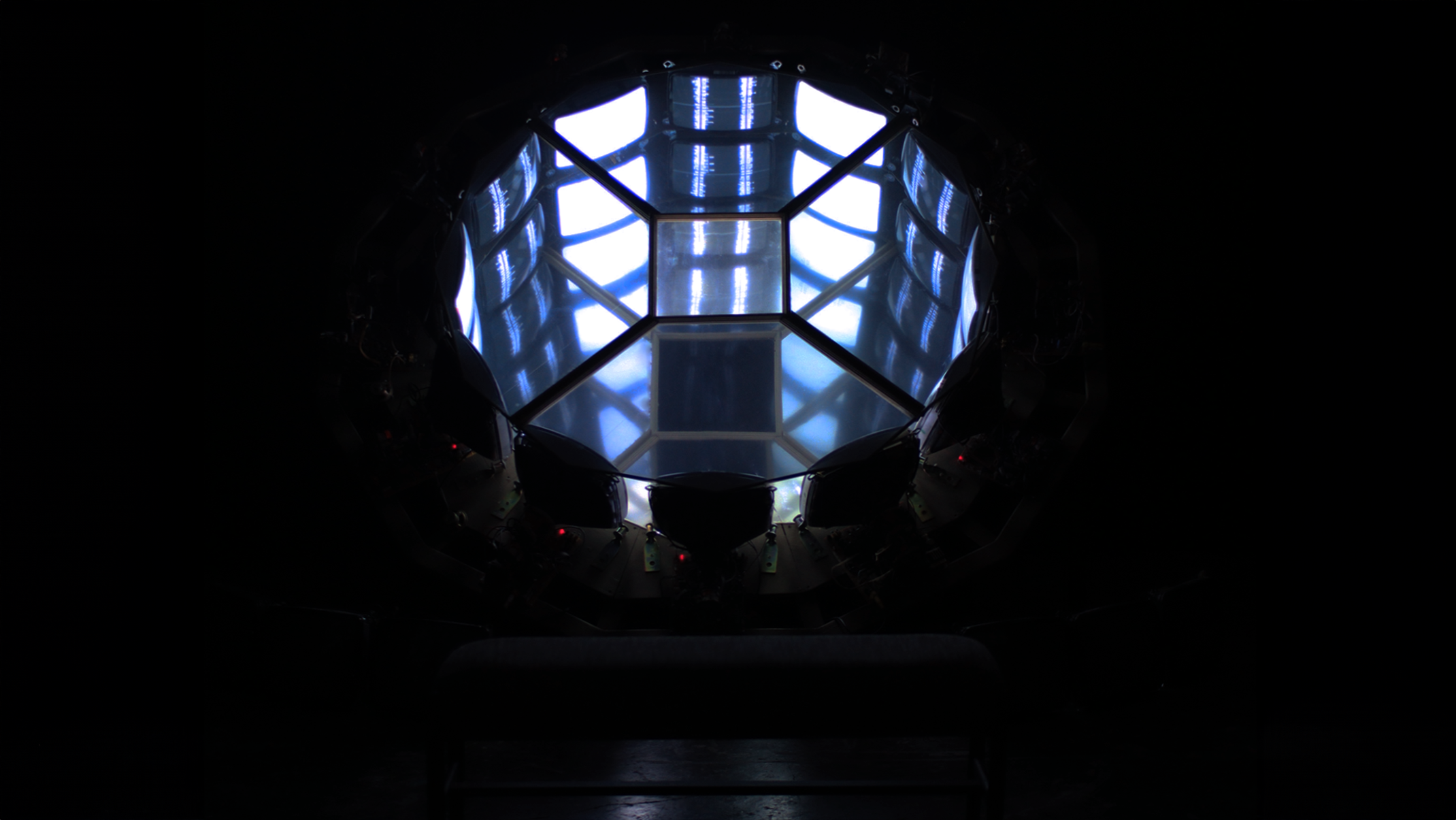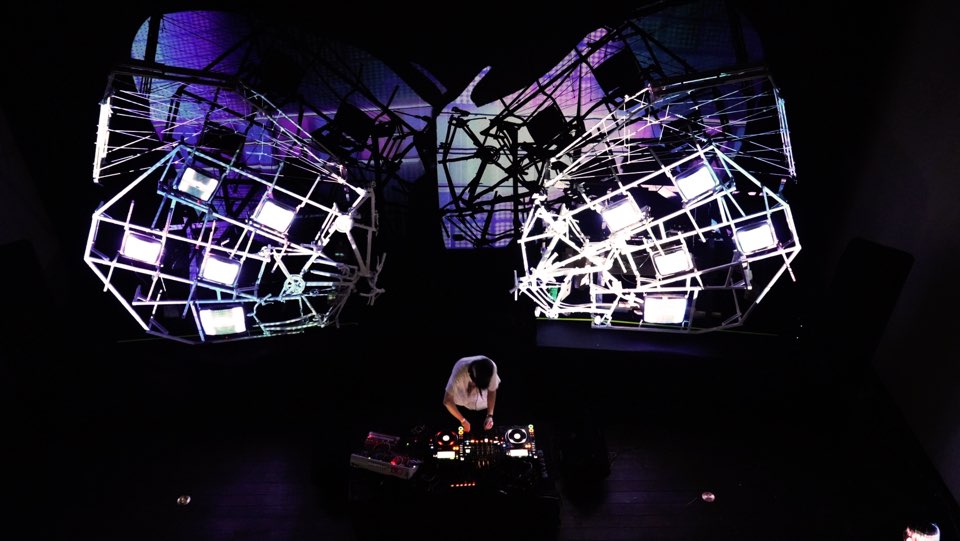SEHWAN YANG
Installation, Staging Artist
Born in Republic of South korea
Based in Japan
Retro - Futurism : Gateway
I am currently conducting research on the theme “The Pure Anticipation of the Future in the Analog Age” and creating artworks based on this study. My research focuses on Retro-Futurism, exploring the gap between the future imaginations of people in the mid-20th century and the reality of the digital age we live in today.
Retro-Futurism examines how the future envisioned by people in the analog era failed to materialize, and how it was replaced by the digital world that now dominates our present-day future. In the 1950s and 1960s, people in the analog age dreamed of a material future made possible by technological advancements and abundant resources, such as space travel, high-speed transportation, and automated cities. However, due to barriers such as war, resource shortages, and economic limitations, most of their dreams remained unrealized. Instead, we transitioned into a digital, network-centered future.
Amid this transformation, the cathode-ray tube (CRT) television played an innovative role in evoking a strong sense of anticipation for the future in the analog age. Television, beyond being a mere entertainment device, served as a medium that introduced new information and visual experiences, stimulating people’s imagination of the future. The TV itself became an artifact of the past’s future aspirations, and this device, placed at the center of people’s homes, was seen as a window to the future. People in that era watched space exploration, futuristic cities, and automated machines on TV screens, dreaming of the future they would live in. The television symbolized a deep belief in technological progress and the future it promised.
However, the vision of the future portrayed by the TV did not materialize in a physical sense. Instead, we now live in a digital network-driven, immaterial future. In this process, the material future imagined during the analog era gradually gave way to an information-based society in the digital age, and with this shift, we began to lose the anticipation of a material future that the analog age once held.
My research and artwork focus on this critical reflection on the digital future and how the material future dreamed of by people in the analog age failed to come to fruition. In particular, I use the cathode-ray tube television as an important medium to re-examine how past innovative technologies stimulated future imagination, and explore what this means in the context of today’s digital reality. I aim to recontextualize these analog media artifacts with a modern sensibility, seeking to revive people’s pure anticipation for the future once again.
Through this research, my works use analog media like cathode-ray tube televisions to visually create a gateway to a parallel world, representing a path we have not walked down yet. By doing so, I explore how the dreams and imaginations of the analog era can connect with the digital age we live in today, and reinterpret these past visions from a contemporary perspective. Ultimately, my work provides audiences with a new visual and sensory experience, bridging the gap between the future of the past and the present reality, and attempts to cross the boundary between the material future of the digital age and the sensory future of the analog era through the metaphor of the gateway.
WORKS
- 2025. 06. (Music Video) “Tohji Concept Film [ZERO TWO]” – crt obeject, last scene[1:30~1;54] / https://youtu.be/EaHqneX4Ko0?si=SwSSgmWChRaylrfS
- 2025. 03. (Show Window) “FREITAG Kyoto Store Window Display” – window installation work / Kyoto, FREITAG Store
- 2025. 03. (Talk Show) “Expression through Reconstruction” – artist talk with FREITAG / Kyoto, FREITAG Store
- 2025. 03. (Exhibition) “Etsuko Ichihara’s DYSTOPIA LAND” – installation fixture fabrication for Etsuko Ichihara’s work / Tokyo, Shibuya CCBT
- 2025. 02. (Exhibition) “SEHWAN YANG Solo Exhibition” – solo exhibition, sponsored by Ogaki Bookstore and FREITAG / Kyoto, Horikawa Shinbunka Building
- 2025. 01. (Sponsorship) “FREITAG” – official sponsorship with FREITAG
- 2024. 12. (Exhibition) “Etsuko Ichihara’s Graduation Exhibition” – installation fixture fabrication for Etsuko Ichihara / Tokyo, Tokyo University of the Arts
- 2024. 11. (Music Event) “EX MUSIC PARCO JAPAN 55anniversary event” – installation work, Entrance art/ Tokyo, Ikebukuro
- 2024. 10. (Music Event) “HARETOKIDOKI 6th Anniversary” – installation work, staging / Tokyo, Shibuya Club Asia
- 2024. 09. (Exhibition) “ATLAS Exhibition” – installation work, / Tokyo University of the Arts
- 2024. 09. (Music Event) “MATARICARIA” – installation work, staging / Fukushima, Iwaki, Seki Onigajyo
- 2024. 07. (Music Event) “FALENA” – Planning, installation work, poster / Tokyo University of the Arts
- 2024. 06. (Music Event) “RESCENE #2” – installation work, staging / Tokyo, Shibuya Chelsea Hotel
- 2024. 05. (Exhibition) “INTRO Exhibition” – installation work / Tokyo University of the Arts
- 2024. 04. (Interview) “FREITAG JAPAN Artist Interview” / Tokyo
- 2024. 04. (Exhibition) “Musashino Art University Excellence Exhibition” – installation work / Tokyo, Musashino Art University Museum
- 2024. 02. (Exhibition) “Musashino Art University Selected Exhibition” – installation work / Tokyo, Musashino Art University Ichigaya Campus
- 2024. 02. (Music Event) “RESCENE #1” – installation work, staging / Tokyo, Shibuya Chelsea Hotel
- 2024. 01. (Exhibition) “Graduation Exhibition, Musashino Art University” – Selected for Excellence Award / Tokyo, Musashino Art University
- 2023. 12. (Exhibition) “001/100” – Planning, installation work, poster, DM production / Tokyo, Shinjuku Ganka Garo Gallery
- 2023. 11. (Exhibition) “KYOTO ITO ITO” – Exhibition setup, lighting, spatial design / Tokyo, Azabudai Hills Ogaki Bookstore
- 2023. 11. (Exhibition) “PALE BLUE DOT” – Planning, installation work, poster, DM production / Tokyo, Musashino Art University
- 2023. 11. (Exhibition) “Exhibition of Reiko Sudo’s Fabric-Making” – Installation furniture / Akita
- 2023. 10. (Exhibition) “KYOTO ITO ITO” – Exhibition setup, lighting, design assistance / Kyoto, Ogaki Bookstore
- 2023. 07. (Exhibition) “White” – installation work / Tokyo, Musashino Art University
Contact
Copyright © 2024 SEHWAN YANG All rights Reserved.

